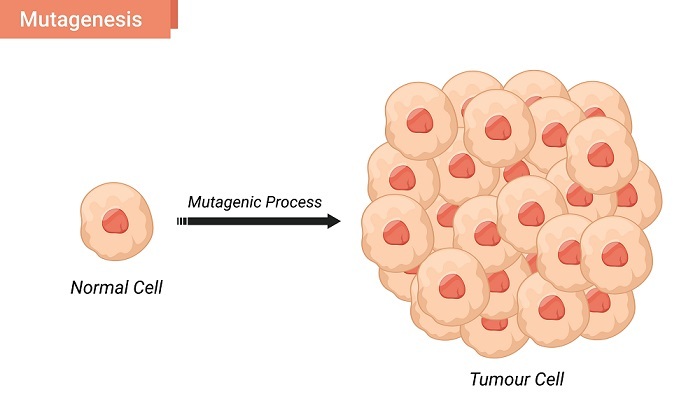
 Data Structure
Data Structure Networking
Networking RDBMS
RDBMS Operating System
Operating System Java
Java MS Excel
MS Excel iOS
iOS HTML
HTML CSS
CSS Android
Android Python
Python C Programming
C Programming C++
C++ C#
C# MongoDB
MongoDB MySQL
MySQL Javascript
Javascript PHP
PHP
- Selected Reading
- UPSC IAS Exams Notes
- Developer's Best Practices
- Questions and Answers
- Effective Resume Writing
- HR Interview Questions
- Computer Glossary
- Who is Who
Signature-Tagged Mutagenesis (STM)
Introduction
Signature-tagged mutagenesis (STM) is a powerful genetic technique used in molecular biology to identify genes that are essential for the survival or virulence of a pathogen. STM is a useful tool for studying bacterial pathogens because it allows researchers to identify genes that are required for the pathogen to survive and cause disease. STM is a method that involves the random mutagenesis of a pathogen's genome, followed by the identification of mutants that are unable to survive or grow under specific conditions.

STM was first developed in the 1980s by Stanley Falkow and his colleagues as a tool for studying Salmonella typhimurium. The technique has since been used to study a variety of bacterial pathogens, including Escherichia coli, Yersinia pestis, and Streptococcus pneumoniae. STM has proven to be an effective method for identifying genes that are essential for bacterial survival and virulence and has led to a better understanding of the molecular mechanisms of bacterial pathogenesis.
The basic principle of STM involves the creation of a large library of mutants of a bacterial pathogen. This is accomplished by exposing the pathogen to a mutagenic agent, such as a transposon or a chemical mutagen. The mutagenic agent randomly inserts into the genome of the bacterium, disrupting the function of a particular gene. The resulting library of mutants is then screened for the ability to survive or grow under specific conditions, such as in the presence of a particular antibiotic or in a host organism.
To identify mutants that are essential for the survival or virulence of the pathogen, a unique "signature tag" is added to each mutant in the library. This signature tag allows researchers to identify individual mutants within the library and track their behavior in various conditions. The signature tag can be a short DNA sequence, a unique barcode, or a fluorescent protein. The tag is inserted into the genome of each mutant along with the mutagenic agent.
Once the library of mutants has been created, it is screened for mutants that are unable to survive or grow under specific conditions. For example, the library can be screened for mutants that are unable to grow in the presence of a particular antibiotic. Mutants that fail to grow under these conditions are isolated and the signature tag is identified. This allows researchers to identify the specific gene that has been disrupted by the mutagenic agent.
STM has been used to identify genes that are essential for bacterial virulence. For example, STM was used to identify the genes required for the virulence of Salmonella typhimurium. The technique identified several genes involved in the pathogen's ability to survive in the host organism and cause disease. Similarly, STM has been used to identify genes required for the virulence of other bacterial pathogens, such as Yersinia pestis, the causative agent of bubonic and pneumonic plague.
In addition to identifying genes required for virulence, STM has also been used to identify genes required for bacterial survival in different environments. For example, STM was used to identify the genes required for the survival of Escherichia coli in the intestines of cattle. The technique identified a number of genes involved in the pathogen's ability to survive in the harsh conditions of the intestinal environment.
One of the major advantages of STM is its ability to identify multiple genes in a single experiment. The technique allows researchers to screen large libraries of mutants for the ability to survive or grow under specific conditions. This can lead to the identification of multiple genes involved in the same pathway or process. This is particularly useful for studying complex biological processes, such as bacterial pathogenesis.
Limitations
While STM is a powerful technique for identifying genes that are essential for bacterial survival and virulence, it has limitations in identifying genes that are not essential. This is because the technique relies on identifying mutants that are unable to grow or survive under specific conditions, which means that it is biased towards identifying genes that are required for survival or virulence.
The technique is designed to identify genes that are important for a specific phenotype or behavior, such as growth in the presence of an antibiotic or survival in a host organism. Mutants that do not exhibit a phenotype under the specific conditions tested will not be identified using STM. This means that genes that are important for other processes, but not required for the specific phenotype tested, may not be identified using STM.
Furthermore, STM relies on random mutagenesis, which can result in a bias towards identifying genes that are more easily disrupted by the mutagenic agent. This means that some genes may be missed in the screening process because they are less likely to be disrupted by the mutagenic agent used.
Conclusion
STM remains a valuable tool for identifying genes that are essential for bacterial survival and virulence. It has led to the discovery of many important genes involved in bacterial pathogenesis and has provided insight into the molecular mechanisms of bacterial virulence. To overcome the limitations of STM, other genetic techniques, such as transposon insertion sequencing (Tn-seq) and CRISPR-based screening, have been developed to complement and extend the utility of STM.

